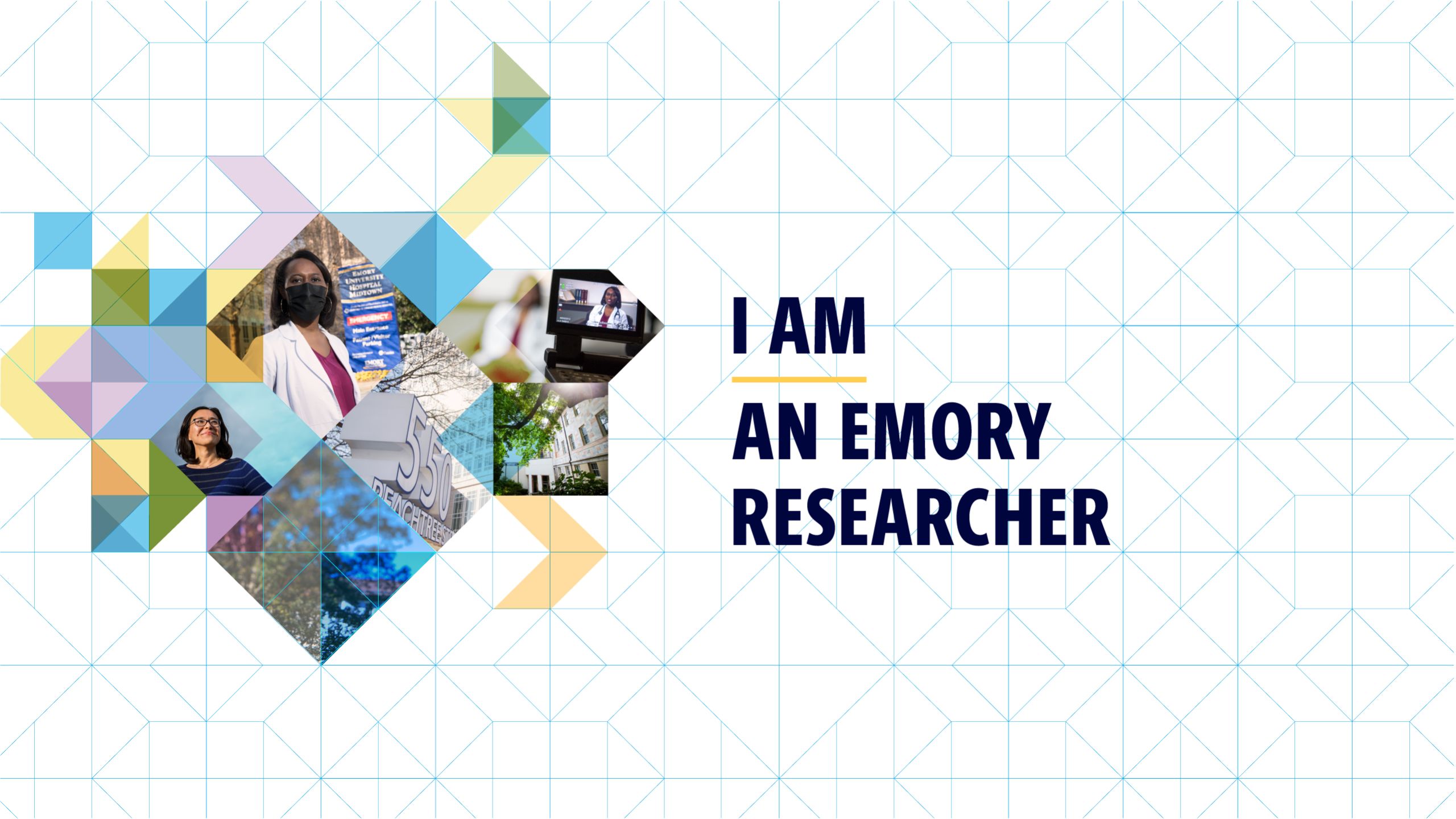(COPY)

I AM
AN EMORY
RESEARCHER

“Cancer disparities have traditionally been studied in silos, such that one group looks at biological factors while another investigates the social or environmental drivers. Our research team hopes to integrate these areas so we can better respond to how people live and experience the world.”
— Lauren McCullough, breast cancer researcher
MAPPING INEQUITIES IN BREAST CANCER OUTCOMES
Six months into the COVID-19 pandemic, breast cancer epidemiologist Lauren McCullough felt like she was hanging by a thread. Like many working moms during this crisis, she was balancing an exhausting workload — teaching, researching, writing, mentoring her graduate students, while home — schooling two elementary school children and nursing and caring for her infant.
So one afternoon, when her boys begged her to join them outside in play, she pushed aside thoughts of looming deadlines and embraced the moment to put back the fun in her work. Armed with sidewalk chalk, she soon turned a game of sketch on the street into a conceptual model for a new grant.
“My research framework was literally street art — it did leave some of our neighbors scratching their heads,” she laughs.
Once a competitive baton twirler, choreographer, and dancer, McCullough says she often finds herself using skills from her artistic past in her scientific present. “A lot of the creativity that I used, especially as a choreographer — seeing the end before the beginning and being able to space people across time — has really helped me in how I think about the research problem: strategically and creatively.”
An assistant professor at Emory’s Rollins School of Public Health, McCullough knew her calling early on. She was a sophomore in college when her father was diagnosed with advanced-stage lung cancer. Watching him navigate that complicated medical journey made her pivot from a career in medicine to a future in epidemiology.
As she was going through the diagnosis with him, she says she wondered, “Well, what about the social factors? What about the fact that my dad doesn’t feel comfortable with his oncologist, so he’s refusing everything? What about all these other things that are not biology, not physics, not chemistry?”
Those questions now lie at the heart of McCullough’s work: She is investigating why outcomes for Black women with breast cancer are so much worse than their white counterparts despite socioeconomic status and other seemingly favorable characteristics.
McCullough is conducting a county-level mapping exercise in Georgia to understand the landscape of breast cancer disparities and spotlight urban and rural areas that can benefit from better resources for care. “We are leveraging the diversity of Georgia to try and disentangle the effects of race from class and from geography on mortality disparities.”
Though the pandemic has proven tragic for millions, it has also drawn much-needed attention to the issue of health inequities and paved the way for researchers such as McCullough to weave in language about these concerns in presentations. “If I had said redlining when we began our research project in 2018, people would have wondered what that had to do with breast cancer. When I use the term now, it’s easier to explain the connection and it requires less convincing — making our research more accessible to the broader community.”
Watch the video below and read on for more about McCullough’s research and how she brings communities into the conversation.
What is the focus of your research?
My main goal is to understand multi-level drivers of disparities in outcomes for breast cancer recurrence and mortality in Georgia. We are looking to see what is happening across spaces. We want to understand what’s happening at the tumor level, what’s happening when a woman is diagnosed and she interfaces with the medical care system, and then what happens based on the neighborhood she lives in. And so, we look at factors such as neighborhood redlining and other measures of discrimination and how that influences treatment and outcomes.
What are some of the key findings from your disparities research so far?
Nationally, Black women are 40 percent more likely than their white counterparts to die of breast cancer, but in metro Atlanta, Black women are twice as likely to die of breast cancer. We found that:
- Black women have poor outcomes despite possessing what are considered good indicators for cancer patients — usually a hormonally responsive tumor that is treatable.
- These racial gaps persist even when women receive initial therapy consistent with cancer guidelines.
- Black women who live in better neighborhoods, are highly educated, have insurance as well as access to healthcare, and an above-average income do much worse than white women with a similar background.
Describe how this research grew from a small grant?
Our initial work on breast cancer disparities was piloted through funds from Emory’s Winship Cancer Institute in 2018 and looked at this issue just in metro Atlanta. We later received funding from the Susan G. Komen Foundation and the National Cancer Institute to expand the surveillance work across the state.
Given the diversity of Georgia with respect to race and income, and its mix of rural and urban populations, we are now looking to see if there are pockets where disparities are either extremely high or low and what might be reasons for that. Every county in our state has disparities, but some are worse than others. So, we are leveraging our community partners and local stakeholders to understand what’s happening in each of those counties, asking: “What do you think are drivers of disparities? What are your patients experiencing?”
What are possible reasons for these disparities?
We need to think about the epidemiology of breast cancer from as early as in utero and how early-life environments may be linked to poor outcomes among Black women. Similarly, what stressors occur during the reproductive period? What’s a woman experiencing during menopause? All of that accumulates over time and can affect the type of breast cancer you get. We need to better understand the effects of stress on the tumor biology by race, but also identify the social, economic, and cultural factors on the disease before, during, and after care.
In Georgia, Black women are more likely to be screened for breast cancer than their white counterparts. It’s in the follow-up actions where we see dramatic setbacks. We just published a paper that shows it takes much longer for Black, uninsured, and low-income women to get an abnormal screening result checked out. The lag between initial screening and the cancer diagnosis can and will change outcomes.
Talk a little more about the role of communities in your research.
In our state-level analysis, we are careful not to make assumptions that the drivers in metro Atlanta are the same as in rural Georgia. Engaging with stakeholders and survivors in those places gives us a better understanding of what they see as the potential barriers and opportunities. For example, the percentage of owner-occupied homes in some areas is a good metric of neighborhood deprivation. In Atlanta, that may not be the best metric of deprivation because people will spend significantly higher amounts on rent than owning a home. But unless we are engaging with people living in these areas, we don’t know or understand these nuances.
By using information from diverse communities for the research and then disseminating that information back to those stakeholders, we’ve created this circle that is very much anchored in community: The community is a part of the research; the research is for the community.
You are also looking at the role of obesity in cancer . . .
I like to put my research into two buckets. On one side we have our surveillance work, which is looking at disparities in Georgia, and then on the other side we have our molecular work. One of the things we’re looking at on a molecular level is to understand how obesity changes the breast tumor epigenome and then how fat tissue in the breast can influence outcomes. The epigenome is the layer on top of the genome, and so one way to think about it is that the genome is like the hardware on your computer. You can’t change it, but you can buy software to add to your computer; the epigenome is like the software — it can change how things are read and expressed. As a population scientist, I love to think about the epigenome because I am interested in interventions. I can’t change your genetics, but if we know that there is something such as obesity or environmental toxins that change the epigenome, that’s potentially modifiable.
Obesity is in part a hormonal disease. It also causes low-grade inflammation, which can make tumors more aggressive and increase tumor progression. So, obesity can impact cancer in several ways, which is why I think it’s such an important comorbidity.
How does your role as a teacher benefit the research work?
My students are an integral part of what I do. Being able to take them out into the community and showing them why what they do matters, that excites me most. I am not going to figure out disparities in my time, so I want to ensure that there remain people who are passionate enough to see this research through. Being able to play a small role toward ending health disparities, either through my research or through training others who will make an impact on the field, is what gets me up every day and powers me through the ups and downs of my research.
“There’s not automatic trust just because I am Black; I have to build it. People want to know that you are there for the right reasons. They want to live, they want their parents to live, they want their grandparents to live, and they want to be engaged, but the relationship you form with them must be authentic.”
— Lauren McCullough

More about Lauren McCullough's research:
Racial disparities in breast cancer outcomes in Metro Atlanta
Cancer care guidelines and racial gaps
More about Emory:
Winship Cancer Institute
Rollins School of Public Health
Emory's Research Impact
Emory University

